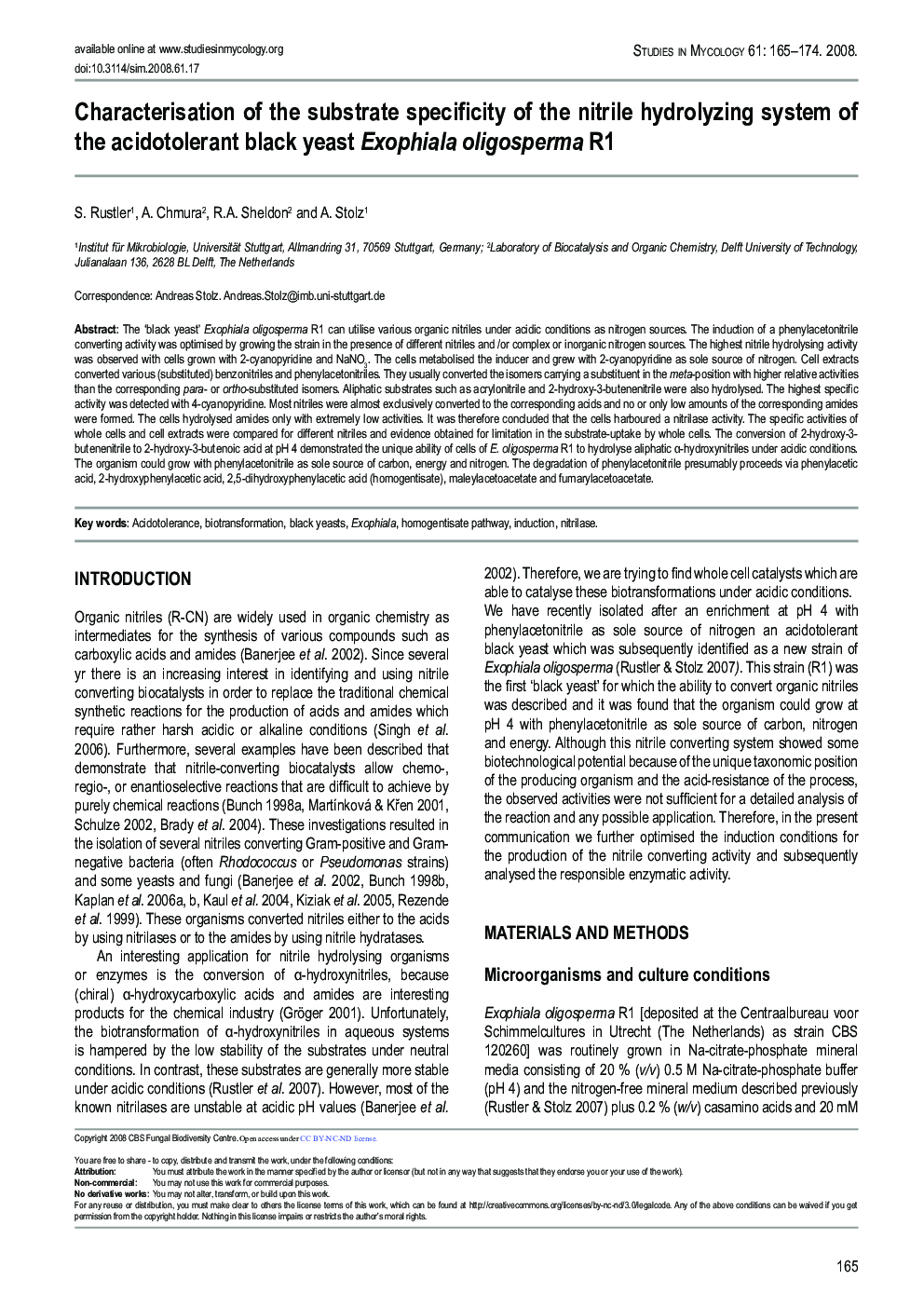| کد مقاله | کد نشریه | سال انتشار | مقاله انگلیسی | نسخه تمام متن |
|---|---|---|---|---|
| 4370765 | 1616959 | 2008 | 10 صفحه PDF | دانلود رایگان |

The ‘black yeast’ Exophiala oligosperma R1 can utilise various organic nitriles under acidic conditions as nitrogen sources. The induction of a phenylacetonitrile converting activity was optimised by growing the strain in the presence of different nitriles and /or complex or inorganic nitrogen sources. The highest nitrile hydrolysing activity was observed with cells grown with 2-cyanopyridine and NaNO3. The cells metabolised the inducer and grew with 2-cyanopyridine as sole source of nitrogen. Cell extracts converted various (substituted) benzonitriles and phenylacetonitriles. They usually converted the isomers carrying a substituent in the meta-position with higher relative activities than the corresponding para- or ortho-substituted isomers. Aliphatic substrates such as acrylonitrile and 2-hydroxy-3-butenenitrile were also hydrolysed. The highest specific activity was detected with 4-cyanopyridine. Most nitriles were almost exclusively converted to the corresponding acids and no or only low amounts of the corresponding amides were formed. The cells hydrolysed amides only with extremely low activities. It was therefore concluded that the cells harboured a nitrilase activity. The specific activities of whole cells and cell extracts were compared for different nitriles and evidence obtained for limitation in the substrate-uptake by whole cells. The conversion of 2-hydroxy-3-butenenitrile to 2-hydroxy-3-butenoic acid at pH 4 demonstrated the unique ability of cells of E. oligosperma R1 to hydrolyse aliphatic α-hydroxynitriles under acidic conditions. The organism could grow with phenylacetonitrile as sole source of carbon, energy and nitrogen. The degradation of phenylacetonitrile presumably proceeds via phenylacetic acid, 2-hydroxyphenylacetic acid, 2,5-dihydroxyphenylacetic acid (homogentisate), maleylacetoacetate and fumarylacetoacetate.
Journal: Studies in Mycology - Volume 61, 2008, Pages 165–174